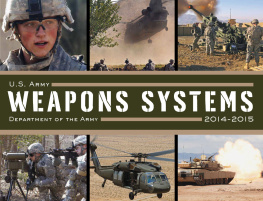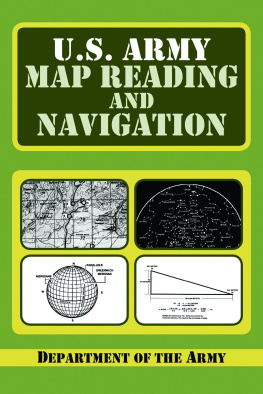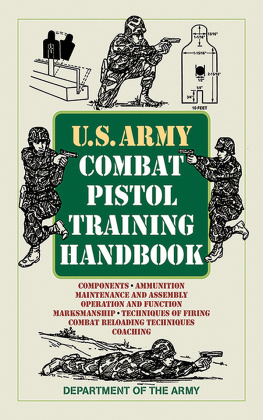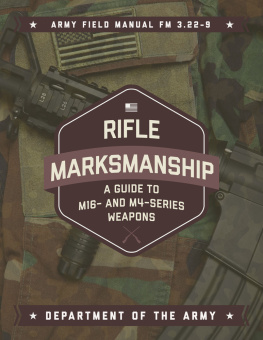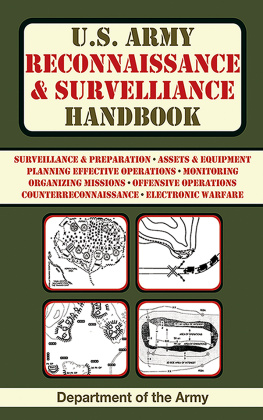Copyright 2014 by US Department of the Army
All inquiries should be addressed to Skyhorse Publishing, 307 West 36th Street, 11th Floor, New York, NY 10018.
Skyhorse Publishing books may be purchased in bulk at special discounts for sales promotion, corporate gifts, fund-raising, or educational purposes. Special editions can also be created to specifications. For details, contact the Special Sales Department, Skyhorse Publishing, 307 West 36th Street, 11th Floor, New York, NY 10018 or info@skyhorsepublishing.com.
Skyhorse and Skyhorse Publishing are registered trademarks of Skyhorse Publishing, Inc., a Delaware corporation.
Visit our website at www.skyhorsepublishing.com.
10 9 8 7 6 5 4 3 2 1
Library of Congress Cataloging-in-Publication Data is available on file.
ISBN: 978-1-62914-401-6
Ebook ISBN: 978-1-63220-162-1
Printed in China
Dear Reader:
Thank you for your interest in this annual publication, which details the Armys major weapon system programs and illustrates our ongoing efforts to empower, unburden and protect our Soldiers. The Armys Acquisition community is charged with the solemn responsibility of maintaining our Soldiers unprecedented edge against current and future threats.
With program descriptions, status and specifications, projected activities, and names and locations of large and small contractors, this book will provide you with a better understanding of our efforts to provide Soldiers with the best, most advanced and sustainable equipment possible. To this end, we are mindful of the public trust imposed by the use of taxpayer resources. We continuously seek to improve our business practices to meet the needs of our Soldiers on an efficient and timely basis.
In providing our Soldiers with world-class capabilities, Army acquisitions most important asset is our people. Our skilled and dedicated professionals, working in Program Executive Offices and program offices throughout the nation, execute diverse responsibilities to enable the disciplined management of an extensive acquisition portfolio with programs that range from Soldiers systems to precision fires and from air and mission defense to ground combat systems. The responsibility of safeguarding future Army capabilities is a significant honor for the acquisition community and is one that we do not take lightly.

Heidi Shyu
Assistant Secretary of the Army (Acquisition, Logistics, and Technology) and Army Acquisition Executive



Table of Contents
Introduction
How to Use this Book
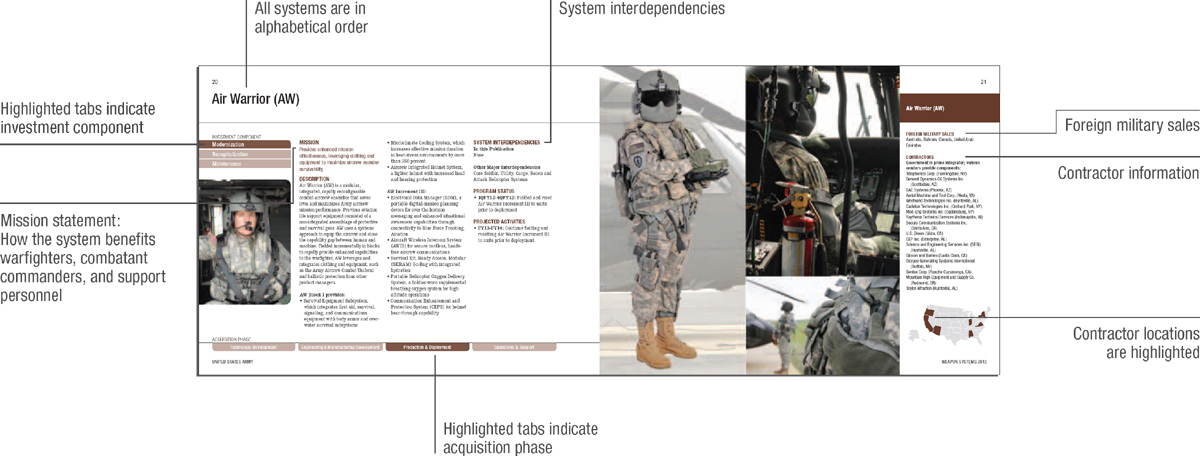
WHAT ARE SYSTEM INTERDEPENDENCIES?
The purpose of the System Interdependencies section is to identify which other weapon systems or components (if any) the main system works in concert with or relies upon for its operation. We categorize the interdependencies in two ways: 1) under the heading In this Publication, which is a listing of systems in this 2014 edition and 2) Other Major Interdependencies, which is a listing of systems that are not included in this publication.
WHAT ARE INVESTMENT COMPONENTS?
Modernization programs develop and/or procure new systems with improved warfighting capabilities.
Recapitalization programs rebuild or provide selected upgrades to currently fielded systems to ensure operational readiness and a zero-time, zero-mile system.
Maintenance programs include the repair or replacement of end items, parts, assemblies, and subassemblies that wear out or break.
WHAT ARE ACQUISITION PHASES?
Technology Development refers to the development of a materiel solution to an identified, validated need. During this phase, the Mission Needs Statement is approved, technology issues are considered, and possible alternatives are identified. This phase includes:
- Concept exploration
- Decision review
- Component advanced development
Engineering & Manufacturing Development is the phase in which a system is developed, program risk is reduced, operational supportability and design feasibility are ensured, and feasibility and affordability are demonstrated. This is also the phase in which system integration, interoperability, and utility are demonstrated. It includes:
- System integration
- System demonstration
- Interim progress review
Production & Deployment achieves an operational capability that satisfies mission needs. Components of this phase are:
- Low-rate initial production
- Full-rate production decision review
- Full-rate production and deployment
- Military equipment valuation
Operations & Support ensures that operational support performance requirements and sustainment of systems are met in the most cost-effective manner. Support varies but generally includes:
- Supply
- Maintenance
- Transportation
- Sustaining engineering
- Data management
- Configuration management
- Human factors engineering
- Personnel
- Manpower
- Training
- Habitability
- Survivability
- Safety and occupational health
- Information technology supportability
- Environmental management functions
- Anti-tamper provisions
- Interoperability
- Disposal/demilitarization
Because the Army is spiraling technology to the troops as soon as it is feasible, some programs and systems may be in all four phases at the same time. Mature programs are often only in one phase, such as operations and support, while newer systems are only in concept and technology development.
For additional information and definitions of these categories and terms, please see the .
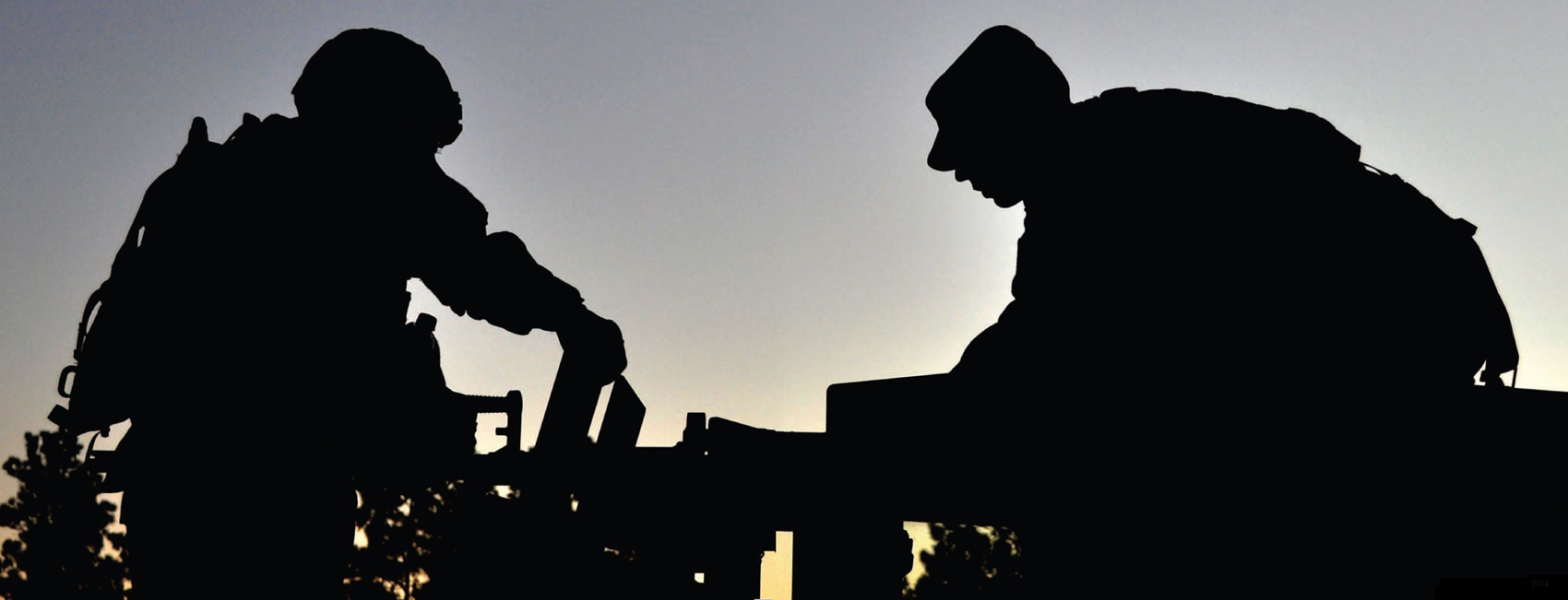
DESIGN / DEVELOP / DELIVER / DOMINATE TODAY AND TOMORROW
ASA (ALT)
MISSION
Provide our Soldiers a decisive advantage in any mission by developing, acquiring, fielding, and sustaining the worlds best equipment and services and leveraging technologies and capabilities to meet current and future Army needs.
VISION
Highly efficient, effective, agile organization responsible for acquiring, developing, delivering, supporting, and sustaining the most capable affordable systems and services for our Soldiers:
// Enabling our Soldiers to dominate the battlespace, safely and securely.
// Enabling our Soldiers to achieve first look, first strike advantage with unprecedented speed and accuracy.
STRATEGIC CONTEXT


